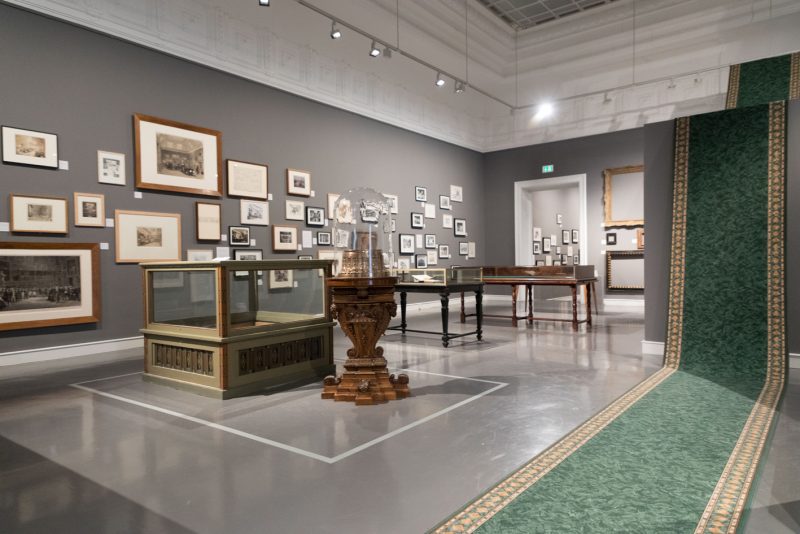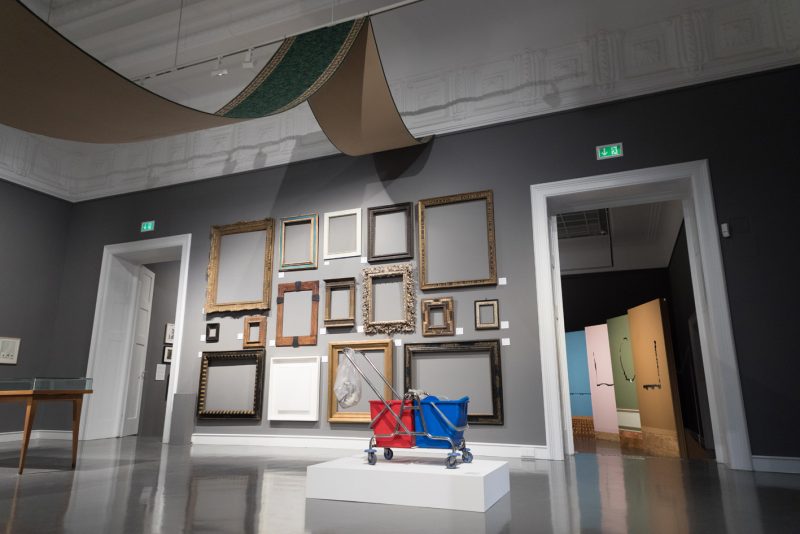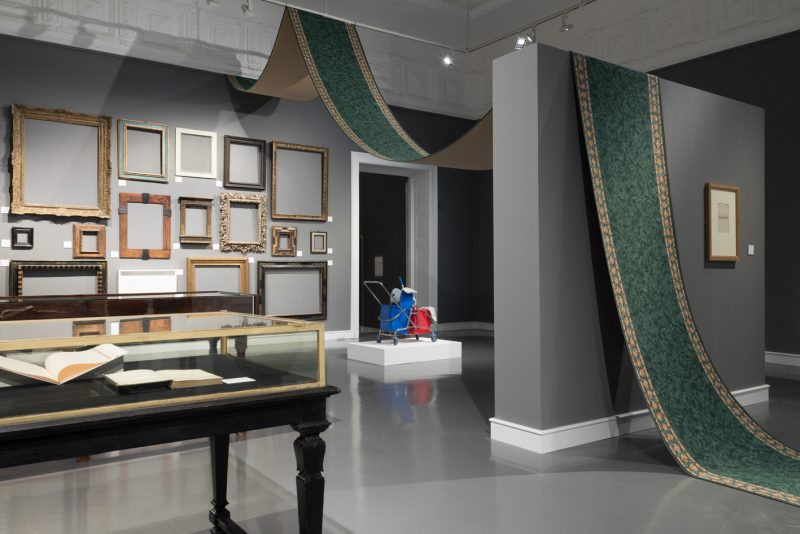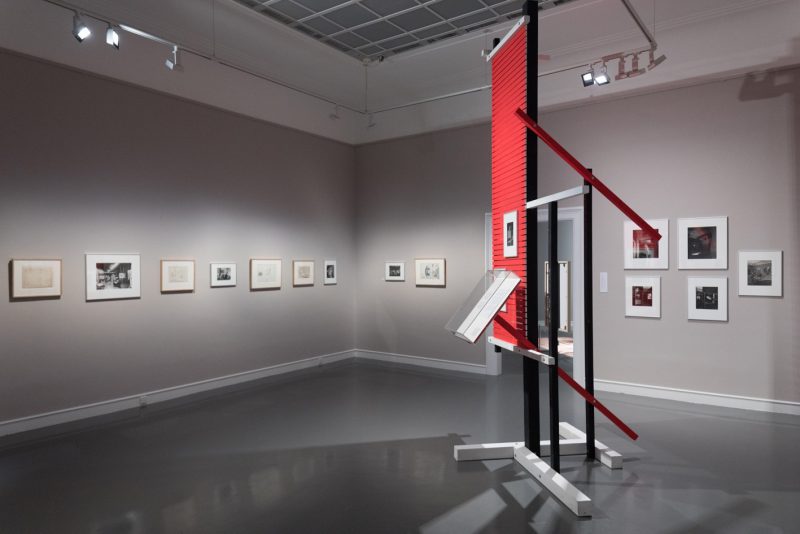Exhibiting the Exhibition
From the Cabinet of Curiosities to the Curatorial Situation
Artists
- Nevin Aladag
- Joseph Arnold
- August II. von Polen
- Pieter Barbiers BZN III.
- Giuseppe Bernardino Bison
- John Bock
- Abraham Bosse
- Marcel Broodthaers
- Mariana Castillo Deball
- Tacita Dean
- Simon Dybbroe Møller
- Christian Eisenberger
- Andrea Fraser
- Otto Graeber
- Johan Conrad Greive
- Friedemann Heckel
- Jeppe Hein
- Julian Irlinger
- Jean-Pierre-Marie Jazet
- Friedrich Kiesler
- Fabian Knecht
- Louise Lawler
- Gustave Le Gray
- El Lissitzky
- Goshka Macuga
- Pietro Antonio Martini
- Allan McCollum
- James McNeill Whistler
- Maria Miottke
- Philipp Modersohn
- Ivan Moudov
- Walid Raad
- Charles Rochussen
- Karin Sander
- Evamaria Schaller
- Lasse Schmidt Hansen
- Adriaen van Stalbemt
- Kamen Stoyanov
- Sebastian Thewes
- Lukas Töpfer
- Claudia de la Torre
- Kaari Upson
- Frans van Stampart
- Johann Georg von Freese
- Anton Joseph von Prenner
- Pae White
- Christian Friedrich Wiegand
- Fred Wilson
Curators
- Johan Holten
- Lisa Bensel
- Hendrik Bündge
- Marie Himmerich
- Imke Kannegießer
Publication
Accompanying the exhibition Hatje Cantz will publish an extensive exhibition catalogue with numerous drawings and illustrations by various artists. Texts: Beatrice von Bismarck, Regine Ehleiter, Stefanie Heraeus, Johan Holten and Bénédicte Savoy.
In the spring of 2018, the major exhibition at the Staatliche Kunsthalle Baden-Baden will focus on the art of the exhibition itself. This exhibition will explore what it actually means to exhibit something, and how this can be shown.
Exhibiting the Exhibition takes a look into the past, at the present, and also gives us a glimpse of the future of the exhibition. Precursors of modern museums will mark the starting point of the exhibition and it ends with the curatorial situations we're currently witnessing. The show brings together several hundred works, which show, for example, how objects used to be presented in early cabinets of curiosities, which forms of display emerged in the 20th century, and how art is presented today.
A historical section in the main galleries of the Kunsthalle will form the prelude to the exhibition itself. It includes two of the earliest known examples of photographs documenting an exhibition. Even earlier forms of exhibition will be illustrated by means of floor plans, hanging plans, images of galleries, and tools of display, such as historical showcases and pedestals from the 17th and 18th centuries. Another focus, also shown at the Kunsthalle, will be the art of the exhibition in the 20th century: this was a time when new approaches to displaying were experimented with, often by the artists themselves. Some of these were so extreme as to have remained revolutionary to this day. One example is the 'Cabinet of the Abstract', which El Lissitzky set up at the Provinzialmuseum in Hanover in 1927. This is presented as a digital reconstruction and re-interpreted by Polish artist Goshka Macuga. Reflections on the "infrastructure" of the exhibition are another topos of contemporary art. For example, museum carpets and benches have been playfully reworked into elaborate choreographic objects. This can be seen in the works of Nevin Aladağ and Jeppe Hein.
In addition, the exhibition can be experienced outside the premises of the Kunsthalle itself. Current works attest to the fact that almost any site can be transformed into a temporary exhibition space by the mere creation of a curatorial situation. It is in this sense that the exhibition will conquer the urban space of Baden-Baden: shop windows, a bridge which crosses the river Oos, even the trees of the famous Lichtentaler Allee will be turned into exhibition spaces.
Amid all the changes in the centuries-long history of the exhibition, there has been one constant: an exhibition is not an exhibition without its audience.






















